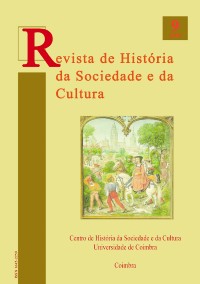Please use this identifier to cite or link to this item:
https://hdl.handle.net/10316.2/39578| DC Field | Value | Language |
|---|---|---|
| dc.contributor.author | Ribeiro, António Vitor Sanches Ferreira | - |
| dc.date.accessioned | 2016-09-28T21:23:22Z | |
| dc.date.accessioned | 2020-09-29T20:22:54Z | - |
| dc.date.available | 2016-09-28T21:23:22Z | |
| dc.date.available | 2020-09-29T20:22:54Z | - |
| dc.date.issued | 2009 | - |
| dc.identifier.issn | 1645-2259 | - |
| dc.identifier.issn | 2183-8615 (digital) | - |
| dc.identifier.uri | https://hdl.handle.net/10316.2/39578 | - |
| dc.description.abstract | Este trabalho pretende desenvolver uma hipótese colocada na dissertação de doutoramento intitulada O Auto dos místicos, na qual se evidenciaram os aspectos ligados a uma mitologia astral dualista, de fundo xamânico, existentes no imaginário místico português. Esta cosmovisão assentava num movimento triádico dialéctico, cujo funcionamento é generalizável ao universo físico e metafísico. Assim, todos os aspectos da vida, principalmente os que estão ligados à relação entre mortos e vivos, se materializavam em figuras simbólicas. Estes símbolos, presentes numa área que extravasa o contexto português e europeu, determinaram comportamentos, rituais ou sonhos, presentes na cultura e religiosidade populares, como a licantropia e o transe. A não consideração ou desvalorização dos aspectos referidos levou a que autores ligados à psicanálise e à antropologia, como Lévi-Strauss, Freud ou Jung, tivessem uma visão distorcida ou reduzida dessas manifestações. | por |
| dc.description.abstract | This study envisages developing further the hypothesis introduced in the Phd dissertation O Auto dos místicos, which outlined the features of a dualist astral mythology, of shaman provenance, prevailing in Portuguese mythical imagery. This cosmic vision was based on a triadic dialectic movement, which applies to both the physical and metaphysical universe. Therefore, all aspects of life, particularly those concerned with the relations between the living and the dead, were materialised in symbolic figures. Such symbols, which were not peculiar to Portugal or even Europe, influenced behaviours, rituals and dreams, present in the culture and religiousness of the people, such as lycanthropy and trance. By disregarding or underestimating this, authors like Lévi-Strauss, Freud or Jung, who were linked to psychoanalysis and anthropology, adopted distorted or narrow views of such manifestations. | eng |
| dc.language.iso | por | - |
| dc.publisher | Centro de História da Sociedade e da Cultura | - |
| dc.rights | open access | - |
| dc.subject | Popular religion | eng |
| dc.subject | Inquisition | eng |
| dc.subject | Lycanthropy | eng |
| dc.subject | Shamanism | eng |
| dc.subject | Psychoanalysis | eng |
| dc.subject | Religião popular | por |
| dc.subject | Inquisição | por |
| dc.subject | Licantropia | por |
| dc.subject | Xamanismo | por |
| dc.subject | Psicanálise | por |
| dc.title | O complexo totalizante simbólico: religião popular, xamanismo e psicanálise nos arquivos da Inquisição portuguesa | por |
| dc.type | article | - |
| uc.publication.collection | Revista de História da Sociedade e da Cultura vol. 9 | - |
| uc.publication.firstPage | 87 | - |
| uc.publication.lastPage | 117 | - |
| uc.publication.location | Coimbra | - |
| uc.publication.journalTitle | Revista de História da Sociedade e da Cultura | - |
| uc.publication.volume | 9 | por |
| dc.identifier.doi | 10.14195/1645-2259_9_3 | - |
| uc.publication.section | Artigos | - |
| uc.publication.orderno | 4 | - |
| uc.publication.area | Artes e Humanidades | - |
| uc.publication.manifest | https://dl.uc.pt/json/iiif/10316.2/39578/247375/manifest?manifest=/json/iiif/10316.2/39578/247375/manifest | - |
| uc.publication.thumbnail | https://dl.uc.pt/retrieve/11845728 | - |
| item.fulltext | With Fulltext | - |
| item.grantfulltext | open | - |
| Appears in Collections: | Revista de História da Sociedade e da Cultura | |
Files in This Item:
| File | Description | Size | Format | |
|---|---|---|---|---|
| o_complexo_totalizante_simbolico.pdf | 1.75 MB | Adobe PDF |  |
Items in DSpace are protected by copyright, with all rights reserved, unless otherwise indicated.
